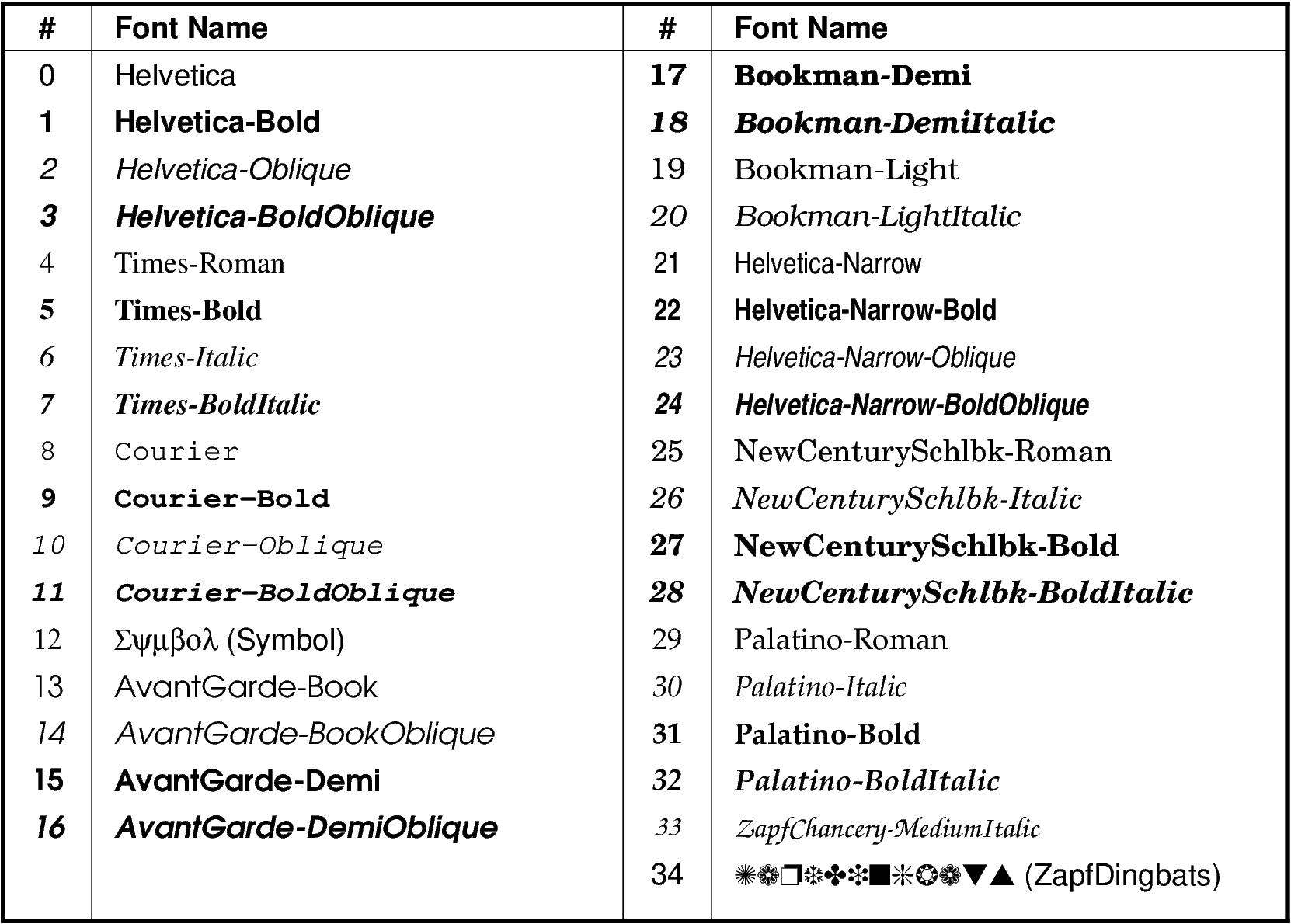Supported Fonts
PyGMT supports the 35 standard PostScript fonts. The table below lists them with their
font numbers and font names. When specifying fonts in PyGMT, you can either give the
font name or just the font number. For example, to use the font “Helvetica”, you can use
either "Helvetica" or "0". For the special fonts “Symbol” (12) and
“ZapfDingbats” (34), see the Supported Encodings and Non-ASCII Characters for the character set.
The image below the table shows a visual sample for each font.
Font No. |
Font Name |
Font No. |
Font Name |
|---|---|---|---|
0 |
Helvetica |
17 |
Bookman-Demi |
1 |
Helvetica-Bold |
18 |
Bookman-DemiItalic |
2 |
Helvetica-Oblique |
19 |
Bookman-Light |
3 |
Helvetica-BoldOblique |
20 |
Bookman-LightItalic |
4 |
Times-Roman |
21 |
Helvetica-Narrow |
5 |
Times-Bold |
22 |
Helvetica-Narrow-Bold |
6 |
Times-Italic |
23 |
Helvetica-Narrow-Oblique |
7 |
Times-BoldItalic |
24 |
Helvetica-Narrow-BoldOblique |
8 |
Courier |
25 |
NewCenturySchlbk-Roman |
9 |
Courier-Bold |
26 |
NewCenturySchlbk-Italic |
10 |
Courier-Oblique |
27 |
NewCenturySchlbk-Bold |
11 |
Courier-BoldOblique |
28 |
NewCenturySchlbk-BoldItalic |
12 |
Symbol |
29 |
Palatino-Roman |
13 |
AvantGarde-Book |
30 |
Palatino-Italic |
14 |
AvantGarde-BookOblique |
31 |
Palatino-Bold |
15 |
AvantGarde-Demi |
32 |
Palatino-BoldItalic |
16 |
AvantGarde-DemiOblique |
33 |
ZapfChancery-MediumItalic |
34 |
ZapfDingbats |
